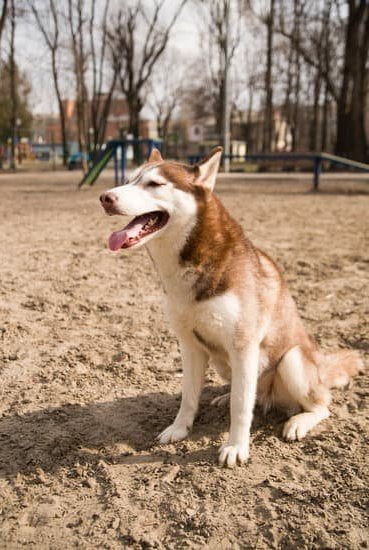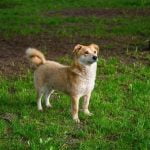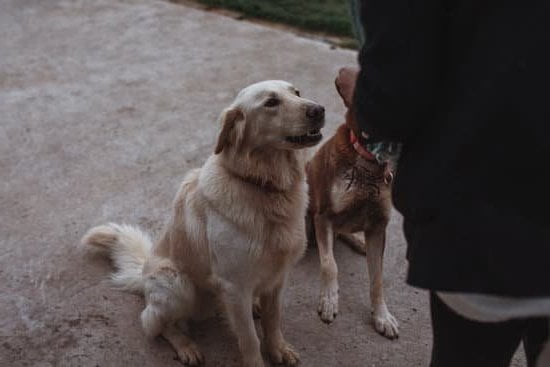When it comes to training your dog, one behavior that can be particularly challenging is jumping on people. Not only can this habit be annoying and potentially dangerous, but it can also make social interactions with your furry friend less enjoyable for both you and others. In this article, we will explore why it is crucial to train your dog not to jump on people and provide a comprehensive guide on how to achieve this.
Jumping behavior in dogs often stems from natural instincts such as seeking attention or displaying excitement. While these actions may seem harmless or even endearing when they are small puppies, they can become problematic as your dog grows bigger and stronger. This is why it is essential to set boundaries and establish rules from the beginning, ensuring that your dog understands that jumping is an unacceptable behavior.
To effectively train your dog not to jump on people, building a strong foundation with basic obedience training is crucial. Teaching commands like “sit” or “stay” provides your dog with an alternative behavior to replace jumping. Positive reinforcement techniques, such as rewarding desired behavior with treats or praise, play a key role in encouraging your dog to adopt the desired actions.
Consistency and reinforcement are vital components of successful training. It is essential to maintain consistency in enforcing the desired behaviors across all family members and daily routines. Additionally, managing and controlling the environment can help prevent jumping episodes by limiting access to guests using leashes or baby gates, creating safe spaces during social interactions.
While most dogs can be trained using these techniques at home, there might be instances where seeking professional help becomes necessary. Professional trainers or behaviorists can assist with specialized training strategies for dogs with underlying issues or more challenging temperaments.
By following the tips outlined in this article and remaining patient and persistent throughout the training process, you can celebrate your dog’s progress in overcoming jumping behavior. Through consistent efforts, you will not only prevent potential injuries and discomfort but also create a well-behaved and happy companion that everyone can enjoy spending time with.
Understanding the root cause of jumping behavior in dogs
One of the first steps in addressing and correcting a dog’s jumping behavior is to understand why it occurs in the first place. Dogs naturally jump on people for various reasons, often seeking attention or expressing excitement.
This behavior can be reinforced if it is inadvertently rewarded with attention from the person being jumped upon. It is essential to recognize that dogs do not jump out of spite or with malicious intent; rather, they may lack proper guidance and boundaries.
From an early age, it is crucial to establish rules and boundaries for your dog regarding jumping. By consistently setting expectations and providing clear guidelines, you can help prevent this behavior from becoming a habit. Jumping should never be encouraged or tolerated even when your dog is a puppy, as it can become more challenging to correct as they grow older.
In addition to creating boundaries, understanding why dogs are prone to jumping is key. Puppies instinctively jump up at their mother to seek her attention and comfort. However, this jumping becomes problematic when directed towards humans especially during greetings or moments of high excitement. Dogs also jump up for social interaction purposes – they get closer to human faces for sniffing purposes and use their paws as a means of physical touch.
Addressing these root causes involves teaching your dog alternative behaviors that are more desirable than jumping up on people.
| Dog Behavior | Root Cause |
|---|---|
| Jumping on People | Seeking attention or expressing excitement |
| Mother-Puppy Relationship | Jumping for attention and comfort from the mother |
| Social Interaction | Using paws for physical touch and getting closer to human faces for sniffing purposes |
Building a strong foundation with basic obedience training
Building a strong foundation with basic obedience training is crucial when it comes to training your dog not to jump on people. By teaching your dog basic commands like “sit” or “stay,” you establish a clear line of communication and create a framework for desired behavior. This section will explore the importance of basic obedience training and how to utilize positive reinforcement techniques to encourage your dog’s cooperation.
To begin, teaching your dog basic commands like “sit” or “stay” helps provide structure and guidance in their interactions with people. When your dog understands these commands, they have an alternative behavior to default to instead of jumping. The repetition of these commands during daily training sessions allows your dog’s brain to make connections, reinforcing the desired behavior over time.
Positive reinforcement is a highly effective method for encouraging your dog’s compliance during obedience training. This technique involves rewarding your dog with treats, praise, or other forms of positive reinforcement whenever they demonstrate the desired behavior, such as sitting instead of jumping. By associating good behavior with pleasurable rewards, you create motivation and incentive for your dog to repeat that behavior in the future.
- Teach your dog basic commands like “sit,” “stay,” and “down.”
- Use repetition and consistency during daily training sessions.
- Reward desired behavior with treats, praise, or playtime.
Correcting the jumping behavior through training techniques
Most dog owners have experienced the frustration of their furry friend jumping on people, whether it’s guests in their home or strangers on the street. While some may see this behavior as harmless or even cute, it’s essential to understand the importance of training your dog not to jump on people. This section will explore effective training techniques to correct jumping behavior and promote better manners in dogs.
One effective technique for correcting jumping behavior is teaching your dog an alternative behavior to replace jumping, such as “four paws on the floor.” Start by putting your dog on a leash and standing still while giving them the command to sit. If they remain seated, reward them with praise or treats.
If they try to jump up, quickly turn away and refrain from any interaction until they calm down. Once they’ve settled, give the command again and reward them for complying. Practice this exercise consistently until your dog understands that sitting is the desired behavior when greeting people.
In addition to redirecting jumping behavior, positive reinforcement can also play a significant role in discouraging unwanted actions. When your dog greets someone without jumping, provide verbal praise, gentle petting, or a small treat as a reward. The key is reinforcing the desired behavior immediately after it occurs so that your dog associates good things with keeping all four paws on the floor.
Consistency in training is paramount when addressing jumping behavior in dogs. It’s crucial to establish a routine by conducting regular training sessions and involving all family members. Emphasize the importance of consistent commands and responses across the board so that your dog doesn’t receive mixed signals. By working together as a team and reinforcing positive behaviors consistently, you’ll create an environment where your dog understands what is expected of them.
Implementing these training techniques requires patience and persistence. Dogs learn through repetition and consistency, so it’s essential not to get discouraged if progress seems slow at times. Each small achievement should be celebrated as you work towards resolving the jumping behavior. Remember that training is an ongoing process, and with time, dedication, and positive reinforcement, your dog will eventually learn to greet people politely without resorting to jumping.
Consistency and reinforcement
Consistency and reinforcement are crucial elements in successfully training your dog to stop jumping on people. Dogs thrive on routine and consistent expectations, so it is important to establish clear rules and consistently reinforce the desired behavior.
The significance of consistency in training and reinforcing the desired behavior
Consistency plays a pivotal role in dog training. When it comes to addressing jumping behavior, it is essential to respond to every instance of jumping consistently. If you allow your dog to jump on certain people or in some situations but not others, it can confuse them and hinder progress. It is important for all family members and guests to be on the same page when it comes to reinforcing the “four paws on the floor” rule.
Additionally, consistency applies not only to the response but also to the timing of reinforcement. Rewarding your dog immediately after demonstrating the desired behavior reinforces their understanding that this is what you want from them. Consistently providing praise, treats, or toys when your dog stays calm will help solidify their understanding that calm behavior is preferred over jumping.
Establishing a routine and involving all family members in training efforts
Establishing a consistent routine is essential for successful dog training. Dogs thrive on structure, so incorporating regular training sessions into their daily routine can greatly improve their understanding of expected behaviors. A daily schedule that includes exercise, feeding times, and dedicated training sessions provides opportunities for repetition and reinforcement.
It is crucial that all family members are involved in the training process. Inconsistency or mixed messages from different family members can confuse your dog and make training more challenging. Take the time to educate everyone who interacts with your dog about the importance of consistency in addressing jumping behaviors.
By involving all family members and consistently following through with expectations, you create an environment where your dog understands what is expected of them and has a better chance of successfully overcoming their jumping habit.
Maintaining patience and persistence in the training process
Training your dog to stop jumping on people requires patience and persistence. It is important to remember that your dog is learning a new behavior, and it takes time for them to understand and adjust their actions accordingly.
During the training process, there may be setbacks or challenges that can test your patience. Your dog might revert to jumping behavior in certain situations or struggle to understand the “four paws on the floor” command consistently. It is essential to maintain a calm and patient demeanor during these moments, as frustration can hinder progress.
Remember, consistency paired with positive reinforcement remains key. Continue redirecting your dog’s attention towards alternative behaviors, such as sitting or staying, and reward them for responding appropriately. With time and persistence, your dog will begin to understand what is expected of them, leading to notable progress in overcoming jumping behavior.
By consistently reinforcing desired behaviors, involving all family members in training efforts, and maintaining patience throughout the process, you increase the likelihood of success in training your dog not to jump on people. It may require time and effort, but the result will be a well-behaved and happy canine companion who greets guests politely without jumping.
Managing and controlling the environment to prevent jumping
Managing and controlling the environment plays a crucial role in preventing your dog from jumping on people. By creating a controlled and safe space, you can minimize your dog’s urge to jump and provide them with alternative behaviors during social interactions. This section will discuss some effective strategies for managing the environment to prevent jumping.
Utilizing leashes or baby gates
One effective way to manage your dog’s behavior is by using leashes or baby gates to limit their access to guests. This allows you to have control over their movements while gradually introducing them to visitors. When guests arrive, keep your dog on a leash or behind a baby gate until they calm down. This prevents any opportunity for jumping and gives your dog time to adjust to the presence of new people.
When using a leash, make sure it is long enough for your dog to move comfortably but short enough that you can easily control their movements. If they show signs of excitement or attempt to jump, firmly hold the leash and redirect their attention towards an alternative behavior like sitting or lying down.
Creating safe spaces
Another effective strategy is creating safe spaces for your dog during social interactions. This can be achieved by designating areas where your dog feels comfortable and secure, such as a specific room or using pet gates to create boundaries. Before guests arrive, prepare this safe space with comfortable bedding, toys, and treats.
During social interactions, guide your dog towards their designated area whenever they start showing signs of excitement or the urge to jump. Encourage them to engage in calming behaviors like chewing on interactive toys or settling on their bed. By providing them with a designated place where they can relax and feel secure, you are redirecting their energy away from jumping behaviors.
By implementing these strategies, you are actively managing and controlling the environment in order to prevent jumping behavior in your dog. Remember that consistency is key throughout the training process, so be sure to remain consistent in using these management techniques. Creating a safe and controlled environment will help set your dog up for success and make training efforts more effective.
Seeking professional help if necessary
If you have been consistently working on training your dog to not jump on people but are still experiencing challenges, it may be time to consider seeking the assistance of a professional dog trainer or behaviorist. These professionals have extensive knowledge and experience in dealing with various behavioral issues in dogs and can provide valuable guidance tailored to your specific situation.
One important factor to consider when deciding whether or not to seek professional help is the severity of the jumping behavior. If your dog’s jumping is becoming increasingly aggressive or poses a safety risk to individuals, it is crucial to address the issue promptly with expert assistance.
Additionally, some dogs may require specialized training due to underlying issues that contribute to their jumping behavior. For example, if your dog jumps out of fear or anxiety, a professional behaviorist can help identify and address these underlying emotions and provide appropriate strategies for managing them.
It is also worth noting that seeking professional help is not an admission of failure as a pet owner. Rather, it demonstrates a commitment to providing the best possible care for your dog and ensuring their well-being. By enlisting the support of a professional, you are tapping into their expertise and resources, which can greatly enhance your training efforts and improve the long-term success of modifying your dog’s behavior.
To find a reputable trainer or behaviorist, ask for recommendations from veterinarians, friends, or local animal shelters. Take the time to research potential professionals by reading reviews or testimonials online and scheduling consultations with those who seem like a good fit for you and your dog.
Remember that every dog is unique, so finding someone who has experience working with similar breeds or behavioral issues will increase the chances of achieving positive results. Don’t hesitate to ask questions during consultations regarding their training methods, certifications, and expected outcomes.
By seeking professional help when needed, you can gain insight into effective techniques that will support you in overcoming any challenges you may face in training your dog not to jump on people. Through their guidance, you will be better equipped to create a safe and happy environment for both your dog and your guests.
| Aspect | Details |
|---|---|
| Signs that professional help may be necessary | – Increasingly aggressive jumping behavior\n – Safety risks posed by the jumping\n – Underlying issues like fear or anxiety |
| Tips for finding a professional trainer/behaviorist | – Ask for recommendations\n – Research and read reviews\n – Schedule consultations to find the right fit\n – Inquire about experience with similar breeds/issues\n – Ask questions about methods, certifications, and expected outcomes |
Troubleshooting common challenges and setbacks
Training your dog to stop jumping on people can sometimes be a challenging process that may encounter setbacks along the way. It’s important to be prepared to address these common challenges and have troubleshooting techniques in place to overcome them.
One common challenge in training your dog not to jump is inconsistency. Dogs thrive on routine and consistency, so it’s crucial to maintain a consistent approach to training. If different family members or guests have different expectations or reactions towards your dog’s behavior, it can confuse your dog and slow down the progress. Make sure everyone involved in your dog’s life understands and follows the rules consistently.
Another challenge you might face is overexcitement. When your dog is particularly excited, they may have difficulty controlling their impulses and can easily revert back to jumping behavior. If this happens, it’s important not to get frustrated or scold your dog. Instead, remain calm and redirect their attention towards an alternative behavior such as sitting or lying down. Use positive reinforcement like treats or praise when they display the desired behavior, helping them understand that calm manners are rewarded.
Patience and persistence are key when addressing setbacks during training. Dogs learn at different paces, so it’s essential not to get discouraged if progress seems slow. Consistently reinforce good behavior and continue working with your pup using positive reinforcement techniques. Celebrate even small victories along the way – for example, if your dog manages to keep all four paws on the floor when greeting someone – as this will help motivate both you and your furry companion.
Remember that training a dog not to jump on people is a process that requires time and effort from both you and your pet. By troubleshooting common challenges and setbacks, maintaining consistency in training methods, and practicing patience throughout the process, you will eventually see progress in overcoming jumping behavior. With perseverance, you can celebrate the success of having a well-behaved dog who greets guests politely without jumping on them.
Conclusion
In conclusion, training your dog to not jump on people is an important and worthwhile endeavor. By understanding the root cause of jumping behavior and building a strong foundation through basic obedience training, you can effectively correct this behavior and create a well-behaved and happy dog.
Throughout the process, consistency and reinforcement are key. Consistently enforcing the desired behavior and reinforcing it with positive reinforcement will help your dog understand what is expected of them. It is also important to establish a routine and involve all family members in the training efforts to maintain consistency.
Managing and controlling the environment can also play a role in preventing jumping. Utilizing leashes or baby gates can limit your dog’s access to guests, giving you more control over their behavior. Additionally, creating safe spaces for your dog during social interactions can minimize the urge to jump.
If you find yourself facing difficulties or setbacks in the training process, remember to maintain patience and persistence. Troubleshoot common challenges using appropriate techniques, but always remember that every dog is different and may require individualized approaches.
Ultimately, successfully training your dog not to jump on people should be celebrated as a great accomplishment. Not only does it improve their behavior, but it also strengthens the bond between you and your furry friend. So continue your training efforts with dedication and love for a well-behaved dog who can enjoy social interactions without causing any discomfort or inconvenience.
Frequently Asked Questions
How do I get my dog to stop jumping on people?
To get your dog to stop jumping on people, consistency, patience, and positive reinforcement are key. First, it is important to teach your dog an alternative behavior to jumping, such as sitting or staying calm when someone approaches. Start by ignoring or turning away from your dog when they jump, as any attention can reinforce the behavior.
When they have all four paws on the ground, reward them with treats and praise. Consistently practicing this approach will help your dog understand that jumping does not lead to attention or rewards. Additionally, it is crucial to provide regular exercise and mental stimulation for your dog to reduce their excess energy and excitement levels.
Can you train dogs not to jump on people?
Yes, dogs can be trained not to jump on people. Training a dog not to jump requires providing consistent guidance and teaching them alternative behaviors that are more appropriate for greeting people. With proper training techniques like rewarding desirable behaviors and redirecting unwanted ones, it is absolutely possible for dogs to learn not to jump on people.
However, it’s worth noting that training success may vary between individual dogs due to factors such as breed tendencies and previous reinforcement history. In some cases, seeking professional help from a certified dog trainer may enhance the process.
What causes dogs to jump on people?
Dogs may jump on people for various reasons depending on the context and their individual personalities. Common causes of jumping include excitement, lack of impulse control, seeking attention or affection, or simply wanting to investigate what is happening at eye level. Jumping can also stem from learned behaviors if a dog has been inadvertently rewarded in the past for jumping.
For example, if a person unknowingly reinforces this behavior by giving attention or petting when the dog jumps up. Understanding the underlying reasons behind why your specific dog jumps on people can help tailor an effective training plan that addresses those root causes while teaching more appropriate ways of interacting with humans.

Welcome to the blog! I am a professional dog trainer and have been working with dogs for many years. In this blog, I will be discussing various topics related to dog training, including tips, tricks, and advice. I hope you find this information helpful and informative. Thanks for reading!





